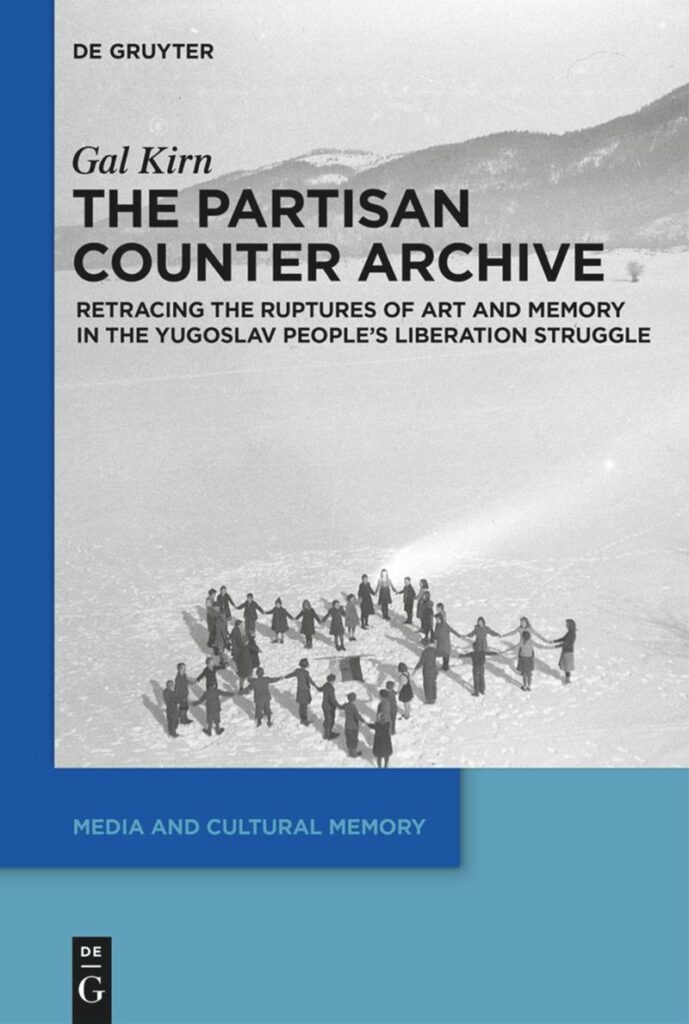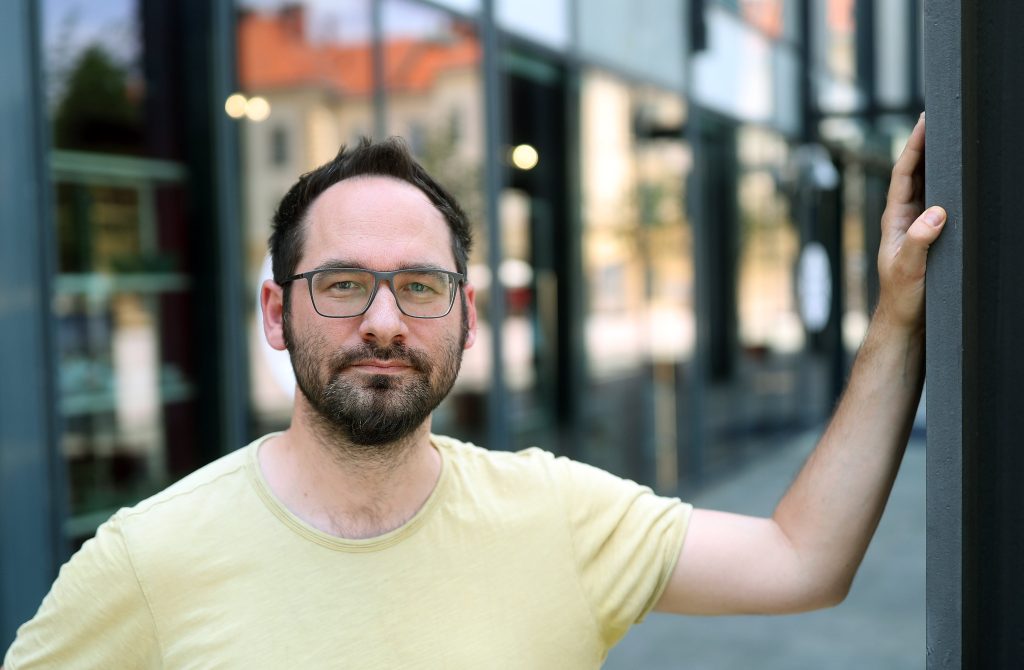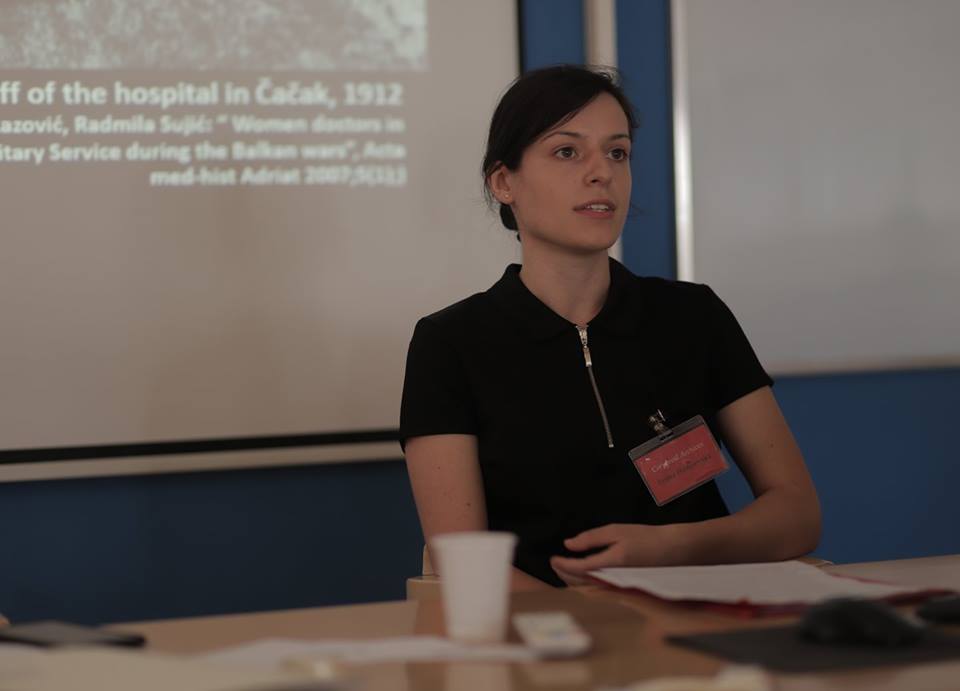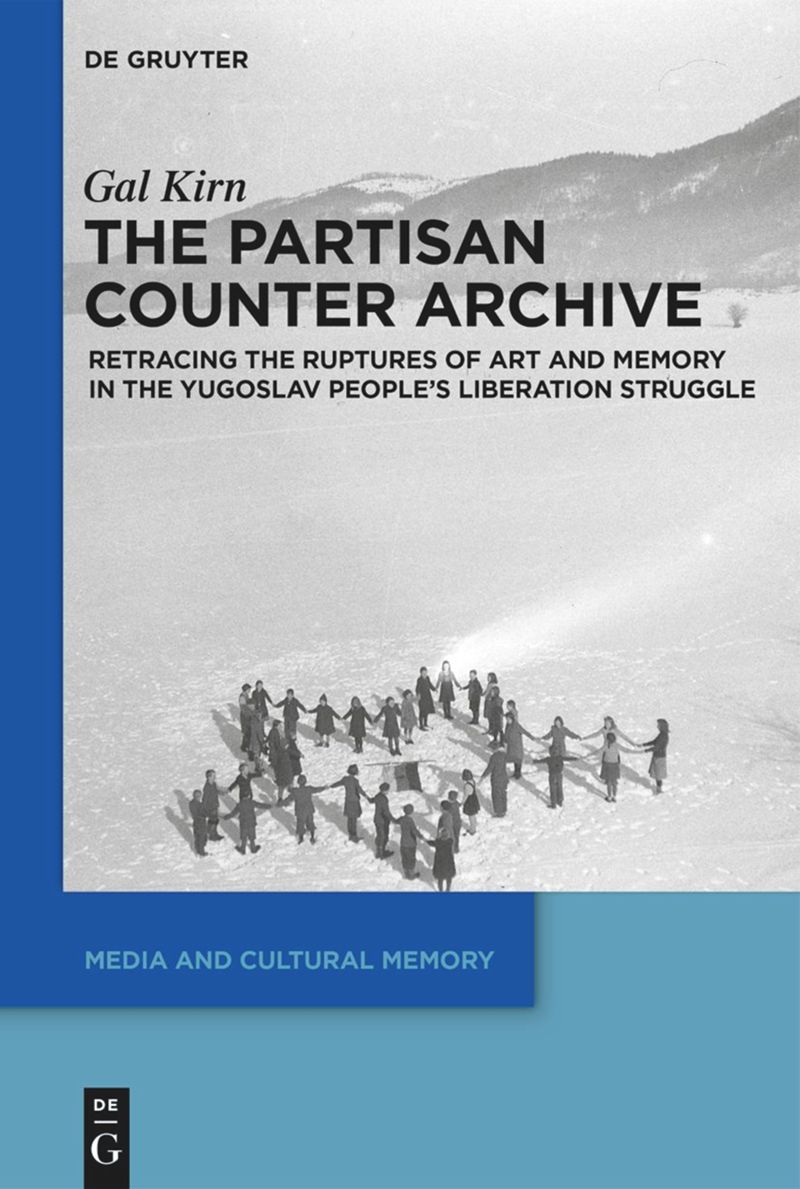
Note from LeftEast editors: This interview was originally published on Meduza.mk on September 27, 2024. The text has been lightly edited.
After re-reading The Partisan Counter-Archives at the start of the summer, I concluded that Kirn’s critical insights on historical revisionism, nationalism in the post-Yugoslav space, historical ruptures, and politics of memory are acutely relevant. At the same time, his theory and study seem to me time-tested by the ongoing racial and colonial hypocrisy in Western academia and the humanities in the context of the wars and crises that shake the world today, as exposed through the prevailing deafness and epistemological injustice towards the suffering of the Palestinian people in Gaza. Hence, our conversation moved along those contemporary coordinates.
Remembering the Partisans and the Ideas Behind the People’s Liberation Struggle
Ivana Hadjievska: You start the book with a reflection on Francis Fukuyama’s thesis about the “end of history.” On the one hand, global capitalism needs less and less liberal democracy and more of an empty ritualized form of democracy. On the other hand, ideologies have never been more alive and their symptoms in the culture and in people’s lives have never been more obscene. Is the “counter archive” a concept and/оr form of practice that can stand as an antidote to the historical policies of liberal democracy—a winner, but emptied out of content?
Gal Kirn: Fukuyama’s words came at the peak of the triumph of capitalist democracy. Witnessing the last financial crisis, he revised his position and even called for a reform-oriented social democratic future. One thing that has persisted is the notion that there is only one political solution—the liberal democracy, accompanied by enlightened technocracy that “will lead us in the future,” i.e., navigate through different crises. The message is: forget about other experiments of utopian thinking. When one says there is just one way, you basically annul the thinking about the past, present, and future, so what you get is this outdated legacy of Western Enlightenment, wrapped in a religious teleological version of historical development. It works as an appeasement of all conflicts or rather erasure of asymmetries and antagonisms.
If we zoom into the Yugoslav context in the 1980–1990s, obviously there was also democratic invention, in the sense that a lot of people were politicized. For instance, Tomaž Mastnak spoke of a “socialist” civil society. In the retrospective representation of the events from the 1980s, most of the mobilized people were presented as nationalist subjects, those who fell prey to nationalist propaganda. It is often forgotten that many working people demanded democratic socialism, or that there is more socialism not less (especially in terms of social protection and better wages).
Let’s have a look at another example from the same period—Poland: although often presented as a strictly conservative and catholic society, it was the birthplace of the Solidarność movement. Organized workers demanded a return towards communism, more workers’ rights and stronger unions, they organized illegal strikes and had their own printing press, etc. People in disintegrating socialist states in the 1990s were surely not as anti-socialist as presented after the demise of socialism.
Therefore, if we already think along the lines of the “end of history,” I would prefer to speak in more precise terms. There were a couple of “deaths of history”: one happened in the 1980s with the death of socialism and the advancement of financialization of the state and banks, leading to an increasing dependency on the global market. At the end of the 1980s, we witnessed the death of Yugoslavia as such: the idea of emancipation and equality between nations and nationalities was overthrown by the idea of ethnic identity and supremacy. A state that was created in the name of the oppressed and by the oppressed was withering away. The first thing that died was socialism with the principle of social justice and solidarity among everyone, and then the idea of federal Yugoslavia and brotherhood followed down the drain. What was then born was not an act of political emancipation, rather it was a mere formal right to succeed from the former state (Yugoslavia). This gave birth to Slovenian and Croatian independence… The act of independence itself carried no serious emancipation for working people, women, and different social groups and minorities, all those who became more vulnerable and more oppressed in the following years.
The wars in the 1990s weren’t liberation wars, while the political elites aligned with foreign opinion leaders were trying to convince us that the wars were just a part of our local culture of eternal ethnic animosity; meaning that without a strong dictator (Tito), things will necessarily fall apart. There was a wave of privatizations and destruction of social infrastructure that took place, with or without wars. It is in that sense that I define the process of “primitive accumulation of revisionist memory”: massive levels of violence, ideological reframing, and memorial revisionism were needed in order for socialism and Yugoslavia to die. This is why we cannot speak only of an economic transformation, of neoliberal shock therapy (Naomi Klein), but of a major ideological and political transformation.
I.H.: Talking about “national reconciliation” in the aftermath of the Yugoslav state, it seems that the ideological process, operating within the politics of memory, transfers the entire weight of the partisan movement to the building of national sovereignty of each Yugoslav people separately. At the same time, it suppresses the (memory of) communist ideology that was the foundation of the People’s Liberation Struggle. To add a touch of sardonic wit, it’s not uncommon to hear someone brag about their partisan grandparents one minute, only to applaud colonial policies the next. Is there a possible solution for this perverted co-opting?
G. K.: Yes, we can observe different memorial strategies across the post-Yugoslav space. In some places, the attitude towards People’s Liberation Struggle (NOB) legacies is iconoclast: it’s about eradicating the antifascist partisan past, especially parts of Croatia that have been successfully cleansed of that past. Then there is a typical example of “wild” reconciliation. Let’s take the example of the Kozara monument in Republika Srpska, where partisans and chetniks are being commemorated together; or in Slovenia, there was quite a monstrous, sophisticated process of “national reconciliation,” which was presented as a beacon of “civilized ways of commemoration.” Through this subtle ideology evoked in the name of humanism, the ruling elites decided that the fascists and the partisans should be put on the same footing. It wasn’t important that during the Second World War, these were antagonist forces that could not be and cannot be reconciled. One symptomatic monument in the centre of Ljubljana dedicated to “all the victims of violence in the 20th century” [The Memorial of all victims of war] was erected in 2014. Monuments like this decontextualize the struggle and aim to nationalize all the victims, i.e., that all were fighting for Slovenia, fascists and partisans alike, and could thus be seen as members of the space of national sovereignty established with the independence in the 1990s. The “minor” detail that local collaborationists fought in the name of racial and ethnic purity does not enter into the discussion. Interestingly, with the concept of reconciliation, a lot of space for therapeutic methods emerged, deriving from individual practices dealing with personal trauma, which were now implemented on the nation as a whole. If the Slovenian nation wants a free entrance into the future, it needs to reconcile with its tormenting past.
Moreover, what also arose in the (post-)Yugoslav context was the weaponization of victimhood: diverse historians, journalists, and political leaders started competing over which nation had more victims in the 20th century, and these victims were portrayed through an ethno-religious lens.
Still, this is not a local phenomenon. One should only think of the German discussion Historikerstreit, where Nolte started revising German Nazism in the 1980s. Also, if we take a look at the memory studies field that gained traction in the 1980s, we will notice that the field has been mostly focused on violence and victimhood, and much less on the memory of emancipation, solidarity, and gestures and practices of resistance. Even critical memory studies can sometimes become complicit in perpetuating this paradigm of violence. Even if one should criticize wars and genocides, the analytical danger arises if there is no discussion of other antagonisms or important intersections in history. An important example of how the instrumentalization of memory works can be found in an essay by Mariane Hirsh, a Jewish Holocaust scholar from the US. In her essay “Rethinking holocaust memory after October 7,” she writes how the holocaust memory and its exceptionality were being abused in partial ways to construct a protective shield, exculpating Israel’s war crimes throughout its state history. This just goes to show how the academic theoretical field can also play a role in the rehabilitation of fascist practices or similar strategies in new contexts. This is something we have to take into account when we are dealing with memory studies.
I.H: It seems that memory transitions (1980s–1990s) were more important than the economic transition in the region. How are those related to the material basis of the society, on which the symbolic order resides?
G. K.: In order to have a deep transformation of the society, the elites needed to execute a transition in the socio-political apparatus, and especially in the ideological, memorial field. The values of competition, efficiency, and being different from others in the Balkans—all this was emphasized in the process. I’m coming from an Althusserian tradition that is based on structural thinking about ideological and state apparatuses. This aspect can help us understand how counter-revolutionary forces work in a society and how social changes take their historical course. For example: the League of Communists was not a simple monolith where all were some die-hard communists: The League of Communists became full of diverse cadres that represented nationalist and liberal ideologies and were interested in sustaining or expanding their power. They were not interested in socialism, class, or working people. In the late 1980s and the early 1990s, during the wars, it was not the site of the economy that was the most important in thinking historical course; rather, we can say it was suspended. All the republics, their GDP, and their major companies were losing big time. Even if one of the warring parties was winning with territories or had fewer human losses, everyone was losing the economic battle, spending on social infrastructure and becoming more dependent on the West. The social infrastructure that had been built over decades was destroyed. Economically speaking this was a catastrophe. That’s why the transition to capitalist democracy cannot be observed from the economic aspect only. Ideology critique and critical memory studies, as well as other disciplines that tackle the past, need to offer interdisciplinary connections between ideological, political and economic analyses.
(Women’s) Emancipation from a Historical Perspective
I.H.: The Women’s Antifascist Front (WAF/AFZ) was the largest mass women’s organization in the region. The historical rupture here resides in the tremendous advancement of the position of women. In the Macedonian context, the first collections were published in the 1970s, so that at the end of the 1990s the interest was completely marginalized and remained outside the radar of scientific and educational institutions. It took around 30 years for the next systematic research of sources for the history of WAF to be published (Invisible Archives, Center for Research on Culture and Nationalism, 2022). Renata Jabrešić Kirin defines similar phenomena in the post-Yugoslav space as the “crisis of the women’s archive.” The care for the AFZ legacy from the 2000s onwards has been taken up by women’s organizations, the Union of Fighters from the PLS, and а diaspora of individual researchers, artists, and cultural workers—forming “communities of memory.” How to reconcile this position: by re-conquering the institutional space or by further strengthening the communities of memory?
G. K.: When it comes to the historical legacies of AFŽ, there are different, recent and older, examples of people working with AFŽ archives: in Slovenia, there is the research work of Liljana Burcar, Ana Hofman, and the documentation of AFZ/women’s choirs, the museum in Dobrnič [Spominska soba 1. kongresa AFŽ]—the birthplace of Slovenian AFZ. Nonetheless, those women’s collectives were communist and antifascist, so after the transition, it became unsettling, difficult, and almost impossible to commemorate their history. The new elites didn’t know whether and how to narrate their complex story.
In 1991, one such symbolic erasure took place with the removal of the monument commemorating women’s protest from the occupied Ljubljana in 1943. The event commemorated masses of women who protested against the fascist prison system, in August even a mass of around 10,000 people was mobilized. In such times, when an antifascist activist could be arrested and deported to a concentration camp, women with their resilience and courage become the backbone of the resistance, both with illegal and public activities. These protests became major sites of women’s political subjectivities.
After the transition in the 1990s, women’s archives, or to be more precise, counter-archives, were relegated to the sphere of NGOs and artists across the post-Yugoslav context. One beautiful example is the work of the organisation CRVENA, which digitalised the Archive of Antifascist Struggle of Women of Bosnia and Herzegovina and Yugoslavia. The care of archives as a testament to the emancipatory legacy was again taken by women but mostly relegated to individual enthusiasm and NGO initiatives. In some places, there are museums and relevant institutions that do a good job of taking care of the legacy. But the care shouldn’t stay in fenced gardens. Instead, a partisan forest should be made by alliances built between different forces: researchers, artists, political activists, curators—that would know how to bring these counter-histories in a narration, in something that would not end as a “project.” Different subjects should not give up working on this on the ground level.
I.H.: Last year when I visited Zagreb, I didn’t miss the opportunity to visit the exhibition by Sanja Iveković: Nada Dimić File 2023 / Nada Dimić – rekonstrukcija industrijskog nasljeđa. It spoke to me in many ways, personally and professionally, as a woman, as a historian, as a worker… In our conversation, I would like to focus on the archive-public connection, which was also encapsulated in the exhibition. Can we talk more about the cultural tools and work that can provide a “socialization” of the archival legacy? Under socialization of the archival material, I refer to the archival practices devoted to the public presentation of collections as “commons” or collective cultural properties. According to recent research on commemorative practices in local archives in socialist Macedonia, for instance, this “cultural work” was reported under “cultural-educational and propaganda activities” in the institutional (archives) yearly reports.
G. K.: The kind of socializing of the archival material mentioned in the example is an interesting concept, but it should be looked at in the context of the social and economic relationships in the 1950s when social ownership and socialization were juxtaposed with nationalization. If we take examples from Western culture, let’s say in France—when they speak about the Archive, they have always emphasized a capital “A,” an institution that organizes and interprets state sovereignty, an archive can well be an integral part of state reason. Contrary to that, when you have a process of socialization of archives, sometimes that could mean going against state reasoning because it opens an opportunity for a more critical engagement, even deconstruction of the past. What remains for curators, as in the case with Sanja Iveković, is to curate archival material in a way that communicates across time, and see how the documents speak to us in different contexts. Another question is how we, with our works/projects, can make an effect in the community, and how those counter-archives can be seen by the communities as their archives. I have done a lot of research on riots in history, in different contexts: French, English, American, and in many respects community archives after riots became really important for the research and work in those communities. They show that there was not only violence, that those who were invested in the riots were not simply violent subjects to be policed, but rather that these people who belonged to oppressed and segregated communities were always culturally and politically very creative and innovative. That they were and are part of a longer history, a counter-history of the oppressed. This aspect must be taken into consideration when we talk about the socialization of the archives.
Hierarchies of Grief and Anger
I.H.: In the Macedonian context, the first public scholarly conference on the Roma Holocaust was held in 2019. The presence of Roma people in public history is strictly controlled by entrenched racism, practices of discrimination, and feelings of shame. The historical experiences and memories of the Roma victims of the Holocaust exist and are kept in “communities of memory”—i.e., in the private sphere of Roma communities. It seems that there are “hierarchies of grief and anger” among the nations, where some lives are valued and hurt less than others. Can we explain how this othering operates through memory and how hierarchies like these are built?
G. K.: It’s a delicate issue. In the Yugoslav context, one of the issues of memory politics was the prioritization of victory; victims that had ethnic signifiers were all under “victims of fascism,” only after that main designation, they were Jewish victims, Roma victims, etc. Maybe a useful example for an alternative can be taken from the Black Lives Matter movement—their strong anti-colonial push developed mechanisms in order to bring stronger awareness towards the group’s victimhood, as well as their empowerment. But I don’t think that with “a little bit better education, curating, everything will be fixed.” If we are serious enough about the decolonial push, the discussion would lead to a change in the material condition of the community in question, which again comes back to organization and economy. So, the question would be—how can we connect the struggles and not make them more separate? Of course, this does not speak against attempts that want to rightfully highlight and tackle the long-excluded Roma memories and histories.
The Legacy of NOB in the 21st Century: Against Centers of Power
I.H.: In the local partisan lore from my city, there is the example of Mite Bogoevski (1919–1942), a village boy from an emigrant family. As a high school student in Bitola, he became a member of SKOJ in the late 1930s, and then part of the partisan movement when the Second World War began. As a student he had clashes with the school administration, but stayed vocal about his communist ideas through his poetry, even managing to vocalize it, in times when it was strictly punishable. He was killed as a partisan in 1942. He was speaking truth to power, as a very young boy. To me, knowing his life circumstances, that’s a supreme ethical gesture. His story reminds me of a reflection from your book, to Hannah Arendt’s important philosophical contribution to human morality, about the “banality of evil.” You suggest a solution: what if we subverted the gaze, and took a look at examples from partisan movements across history, of ethical stance in the face of power, made by an anonymous student, a peasant, an educator… How can partisan archives, in the prevailing loneliness and sorrow (“springtime of fascism”), help us in the current struggles for universal emancipation?
G.K.: It’s not only about how you interpret and curate the archival material, as you never know how it is going to be used or abused afterwards. A message that is important for all of us who are included, and want to remain engaged, is that not everything is lost and over yet. There is no end to history. Let’s reflect on the first question again – about the end of history: if, as Žižek said a while ago, we are already living in the end times—with the upcoming ecological catastrophe, wars, and their normalization, how can we still think of the future in a utopian way? If dystopia is already here, it won’t manifest in some “big event.” Now let’s resort to history: if we take the fascist occupation during the Second World War, you have a much stronger enemy, people were arrested and executed, sent to concentration camps, and a very dark, dystopian horizon swallows us. But still, it was possible to fight back, organize, imagine, and even win the struggle for liberation. It came with a big price, with all the huge sacrifices, but there was the feeling of an open horizon; and truly, in the next decades, relative prosperity and political autonomy unfolded. The ongoing crisis today is a moment of historical change—one that occurs once or twice in our lifetime. In that sense, we should not forget the importance of micro-politics. There has always been resistance—on an individual and collective level. That is the lesson that one should always have in mind. Although the ideological-commercial apparatus that we live in today may be more subtle, even stronger than that faced by our predecessors from a century ago, people are relatively freer than in the period of fascist occupation. Being a partisan meant not to wait in despair. To be a partisan today doesn’t mean to just be against something—against eco-catastrophe, anti-capitalism, and so on. It means to participate in a utopian imagination, to ask questions like: what is the world that we want to have, who is this “we,” how should we organize… These are the questions that partisans or neo-partisans have to ask. The answers can be found in small micro-gestures, or in bigger gestures. We should continue our quest towards that which provides optimism and articulation of hope.

Gal Kirn is the author of the theoretically influential study The Partisan Counter-Archive: Retracing the Ruptures of Art and Memory in the Yugoslav People’s Liberation Struggle (Berlin: De Gruyter, 2020). He holds a PhD in Intercultural Studies of Ideas. His research interest is grounded in the fields of political science, cultural analysis, and philosophy.

Ivana Hadjievska is a historian and an independent researcher. She holds a Master’s degree in history from the Faculty of Philosophy in Skopje, where she defended the thesis “The human condition of industrial workers in Vardar Macedonia (1918 – 1941)” in 2021. Her research interests are in social history and politics of memory.

